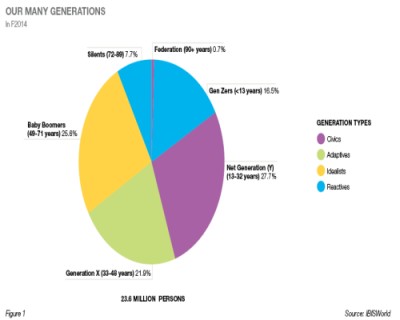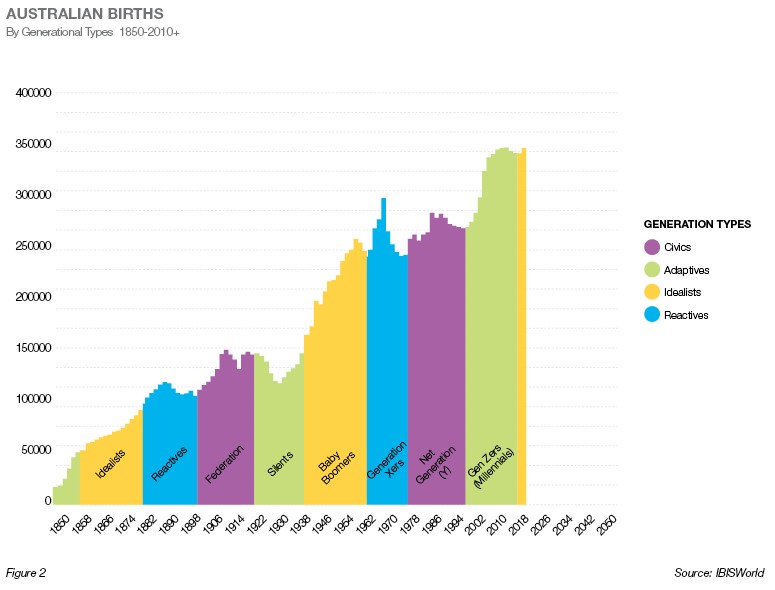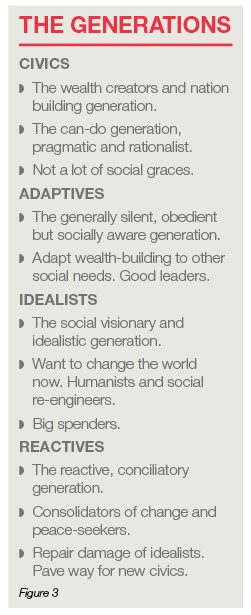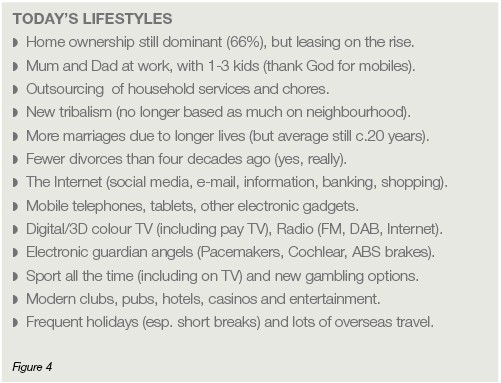Phil Ruthven believes we will have to deal with more differences between the generations as we progress further into the 21st century and enjoy longer lives.
In the long distant past, over 50 years ago, it was tricky enough to be on the same wavelength when there were only three or four generations to understand – mainly oneself, children and grandchildren.
But respect for elders and ever-present social rigidities and protocols meant that there weren’t too many differences or arguments outside of sporting teams, religious affiliations and political allegiances.
We now have six cohabiting generations as we see in Figure 1 with at least five of them having a “voice”.

As directors, we need to understand these generations as customers, employees, suppliers, social beings and voters.
All have greater freedom than at any time in modern history and some generations are more voluble and strident than others.
Ground-breaking researchers and authors William Strauss and Neil Howe identified four types of generations in a study of society in the US going back centuries in their tome entitled Generations in 1991. IBISWorld research in Australia has tended to confirm their findings.
Figure 2 shows the emerging generations in Australia over the past 17 decades with projections to 2020.

A simplistic description of the four types that rotate over and over again through history is shown in Figure 3.

Older generations can often have misgivings about the future and worry about younger generations. But in case some think the world is going to pot, it is well to remember that just 50 years ago in 1964:
- We didn’t live as long (67 versus 78 today for males).
- We were hung-up and embarrassed by anything to do with sex.
- Domestic violence, rapes and paedophilia went unreported.
- Septic tanks were still common.
- There were no freeways.
- There were no domestic jet planes, no mobiles and no internet.
- We had only black and white TV which cost us over $2,700 in today’s money.
- The alcohol scene was awful (6pm pub closing swill, paralytics, wife bashing).
- Shops closed Saturday afternoon, Sunday and on public holidays.
- There was slow-food but no fast-food outlets.
- There was no universal superannuation scheme.
- Few went to university (96,000 vs 1.4 million today).
- There were no cures for cancer and lots of other health problems.
- And who could you outsource household chores to?
- The fact that our standard of living (GDP per capita) has almost trebled in real terms to $67,000 over the past 50 years to the 2015 financial year is yet another reminder that we are better off.
The temptation with ageing is to reminisce about the so-called “good old days”. Around 20 per cent of the population is now over 65 years – not necessarily “old” or “aged” – and heading for 28 per cent by the middle of this century. This cohort was only seven per cent 100 years ago. And, we need to be very careful in defining “old” or “aged” these days.
What is old? At 65 years of age:
- In 1800, you were dead 27 years ago.
- In 1900, you were dead 12 years ago.
- In 2000, you had 12-15 years to go.
- In 2014, 65 is the new 45 of the 1930s.
- In 2100, you may be only two-thirds through your life.
Yet, when we hear the lament about “what is the world coming to”, it is often a case of misplaced nostalgia, a failure to recognise progress and often confusion with habits.
Living longer means living with and respecting a wide variety of customs and traditions – all of which are habits, but with differing lengths of time – across different generations.
After all, habits are comfortable to each generation. The really important thing is to distinguish them from values that are truly worth promoting and defending at all costs, remembering that habits (including customs and traditions) have use-by dates.
In the world of business, all this reminds us is that we are dealing with multidimensional issues.
As often said, we can’t please all the people all of the time.
However, in the workforce, age or generational discrimination is outlawed, so we need to accommodate all three and as bit generations.
In 2014, the composition of our workforce is: 27 per cent Net Gens; 35 per cent Gen Xers; 32 per cent baby boomers and two per cent Silents cum Conservatives (over 70 years of age).
This takes some doing, as it does with the community at large in terms of our social sensitivities and responsibilities where equanimity is the order of the day for some six generations.
On the other hand, we can be and often must be selective in our products and the generations we pitch to.
This is obvious with age-specific products such as for babies, children and retirees, but not so obvious with other products, be they goods or services.
Generations are different and the further down the 21st century with much longer life expectancy in train, the more generations and the differences we are going to have to deal with.

Latest news
Already a member?
Login to view this content


